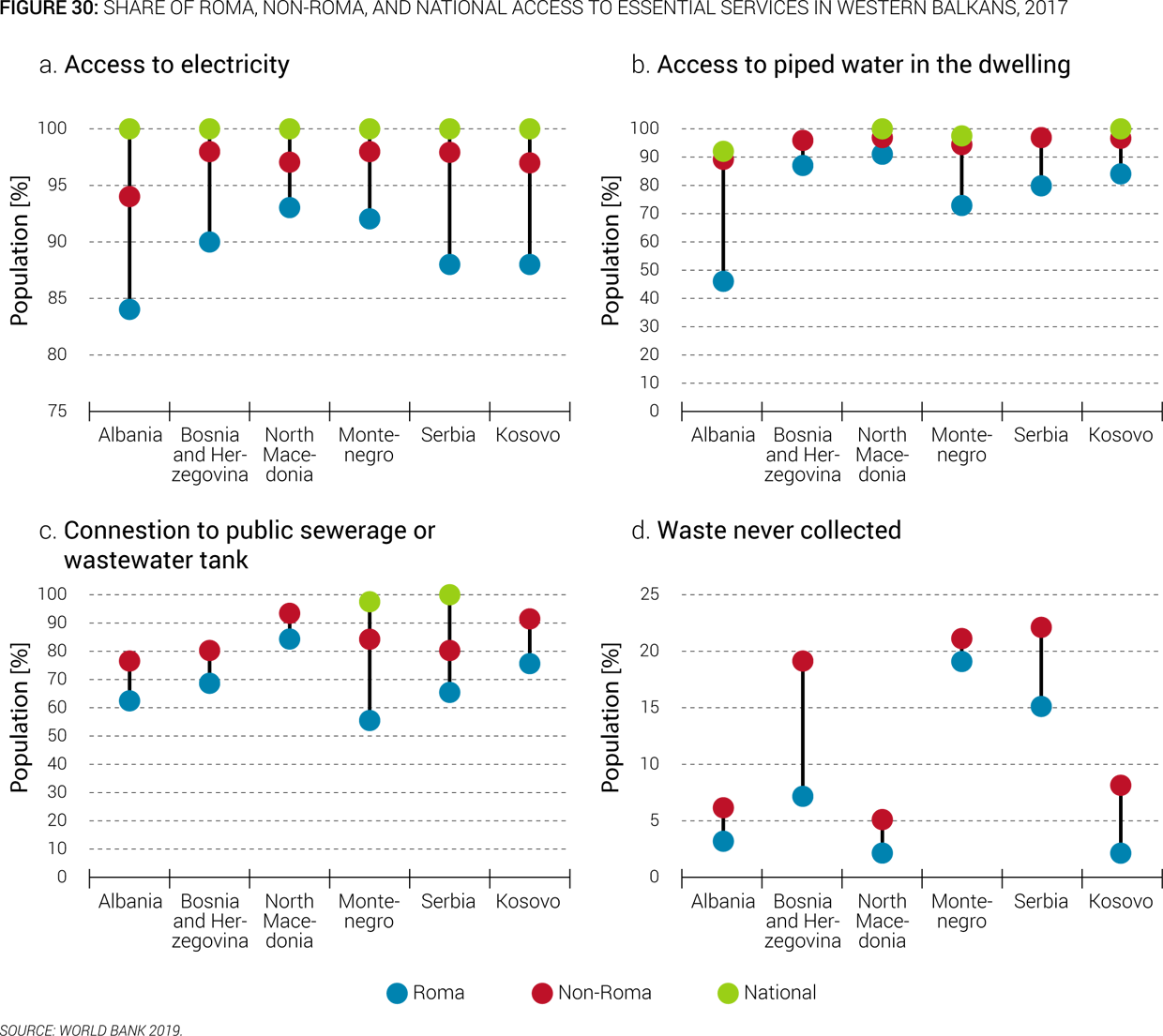D. Providing Access to Marginalized Populations and Minorities
56. Closing the rural-urban services gap and reaching universal access are important challenges requiring countries to expand services to rural areas. The enabling policies, legislative framework, and financing measures need to recognize the service delivery models required to address all rural water supply needs. Access levels to WSS are much lower in rural areas than in urban areas. In addition, the quality of the service and operator practices are often weaker than in urban areas, even when provided by formal public service providers. As mentioned in Chapter III, some countries are addressing this gap through introducing regionalization reforms. However, while regional and urban utilities may be able to reach a substantial share of the rural population, in some countries, parallel local operator models might continue to bring services to villagers. Regional and urban utilities may not be able to reach these segments in the medium or long term because conflicting interests and misaligned incentives may hinder progress. In addition, for dispersed and remote populations (although shrinking in size), a piped networked system may not be feasible, and self-supply is the only viable alternative. Hence, the trajectory for reaching universal access is shaped by country realities in terms of access levels, the existing provider landscape and demographics, and sector evolution. See Box 6 for national examples of closing the rural-urban gap.
Box 6 National Approaches to Close the Rural-Urban Gap
Albania is addressing access to water in rural areas through the implementation of the Territorial Administrative Reform, which mandates the integration of stand-alone WSS schemes previously operated by informal community groups or commune units under one of the 58 regional utilities. In Croatia, the process of integrating locally managed rural water systems within the service areas of public utility companies has seen remarkable achievements. Over the past decade independently managed water supply systems have thus decreased, and there is a much higher connection rate to public water utilities due to network expansions to reach rural areas. Croatian Water estimates that 4 percent of the total population remains connected to locally managed systems, and 12 percent of the total population continues to use self-supply, almost entirely among rural populations. In Kosovo, the Inter-Ministerial Water Council (the national coordination body for water-related issues) put forward a strategy for the management of rural water systems to integrate independently operated water schemes into respective regional water companies (RWCs) in 2014. Since then, about 240 systems have been upgraded and absorbed under the management of the RWCs. Based on a national inventory, it is estimated that 55 percent of the rural population are served by RWCs. Around one-third of those are served through stand-alone rural systems and around two-thirds through extending urban networks to rural areas. Around 15 percent of the rural population are served by rural water systems operated by local operators, typically community-based groups planned for transfer to utilities. The remaining 30 percent rely on self-supply, although one in five resides in settlements with a piped system that is dysfunctional and requires rehabilitation.
57. Minorities continue to have much lower access to WSS services as compared to the past five years. All countries concerned keep stating that they have the same approach to all customers regardless of their ethnicity or social status. Nevertheless, the Roma community continues to present worse socioeconomic indicators in almost all areas. A World Bank (2019) study highlights how marginalized Roma in the Western Balkans do not have the endowments and assets they need nor the ability to use the assets they have efficiently and intensively to generate economic gains and climb the socioeconomic ladder. In 2017, the European Roma Rights Centre (ERRC) conducted a field study in 75 Roma settlements located in Albania, Hungary, North Macedonia, Montenegro, Moldova, and Slovakia. This study targeted Roma communities’ access to drinking water and sanitation. The research shows that percent of the surveyed settlements do not have access to tap water in their dwelling and 39 percent have to resort to open access to water resources. Moreover 91 percent have to use external, self-made dry toilets or resort to open defecation, while only 23 percent have toilets in their homes (ERRC 2017). In addition, Figure 30, panels a–d, showcases differences in access to essential services between non-Roma and Roma populations in the Western Balkans. Three countries have a national strategy to improve living conditions of minorities: Albania with its National Action Plan for the Integration of Roma and Egyptians for 2016–2020, Slovenia with its National Governmental Action Programme for Roma (2017–2021), and Montenegro with its Roma Strategy 2008–2012.


